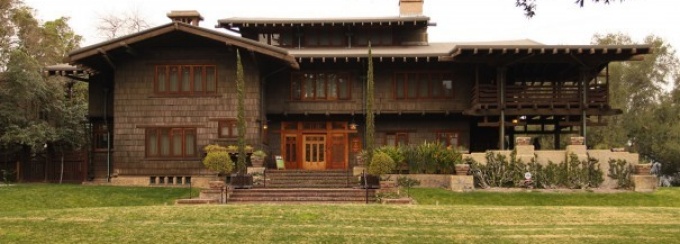About

“The Whiteness of 19th Century American Architecture” is a one-day symposium in architectural history organized by the School of Architecture and Planning at the University at Buffalo. This symposium is an outgrowth of the Race + Modern Architecture Project, an interdisciplinary workshop on the racial discourses of western architectural history from the Enlightenment to the present.
Purpose and Themes
Our symposium will outline a critical history of the white cultural nationalisms that have proliferated under the rubric of "American Architecture" during the long nineteenth century. This theme will be explored chronologically from the late-nineteenth to the mid-twentieth century and regionally from representative avant-garde movements on the East Coast to the regionalist architectural styles of the Midwest and West Coast. Such movements included the neoclassical revivals of the Chicago World’s Fair in 1893, the Chicago School of Architecture and the Prairie Style, the East Bay Style on the West Coast, the Arts & Crafts movement across the continent, and various interwar movements that claimed to find unique historical origins for an autochthonous American style of building.
The five architectural historians in attendance have been charged with providing some preliminary answers to the central question of these proceedings:
What definitions of American identity have historically influenced the most celebrated national architectural movements of the long nineteenth century, and how was this influence been manifested in the labor relations, ideological commitments and material dimensions of innovative architectural forms?
In the past, architectural historians have optimistically, and perhaps anachronistically, interpreted American architectural movements through the lens of an inclusive American liberalism that embraces people of all colors, nationalities and religious creeds. Yet such an understanding fails to examine these national movements from the lens of white settler colonialism and the exclusive cultural nationalist ideologies that were often intimated by their appropriation for various political purposes. How and when did American Architecture exclude certain groups of people by internalizing or otherwise normalizing the white nativist ideologies of American democracy? What elements of these designs tacitly reified the political values, social mores, and cultural practices of a white middle- and upper-middle class clientele at the expense of other ways of inhabiting space or representing cultural differences? As Dana Cuff, Robert Gutman, Mary Woods, and Joan Ockman have noted in their studies of the architectural profession, the elevation of the “gentleman architect” depended on the cultivation of a stratified categorization of labor and social status that legally and ideologically separated intellectual and manual work by placing the licensed architect at the apex of what can now be called a Social Darwinist evolutionary hierarchy of talent. In this process, black, brown and Chinese labor was erased from historical memory as the vision of the architect presided above all other concerns. In addition, the concerns of wealthy white clients were privileged above the servant classes that often made their lives of leisure possible in the first place. These omissions are more than a simple lapse in the historical record—they are evidence of the racial bias inherent in the critical methodologies and historical archives that have long supported historiographical exposition.
Recent events in American politics should now compel architectural historians to question the inclusive assumptions of long accepted critical readings of the liberal foundations of nationalist architectural movements in the past and present. The renewed sense of white nativism and the rise of white nationalist groups that have emerged in the wake of the election of Donald Trump in 2016 are only the most obvious symptoms of a more fundamental debate: Who is really an ‘American’ today and what traits do they have that are commonly agreed upon within this democratic republic? In order to answer such questions, we need to look more closely at the troubling racial discourses operating within the deeper history of our national building traditions. Only a forthright critique of the latent whiteness of American Architecture will enable architectural historians to combat the ideological appropriation of these building traditions for nefarious means. What makes American Architecture so susceptible to being identified with an exclusively white nativist outlook of American culture, and how can one explicitly pluralize this foundation to more substantively incorporate more of the body politic that has come to define the nation? This symposium will offer some first steps to answering this question.